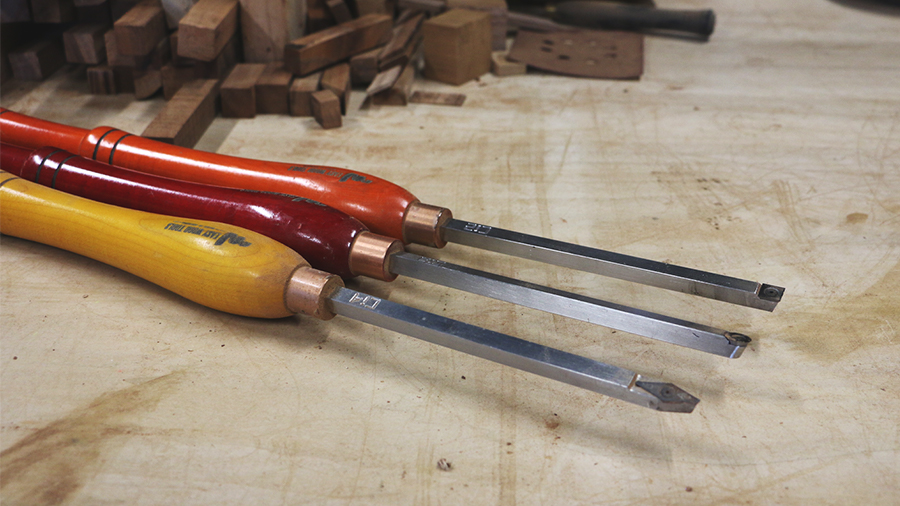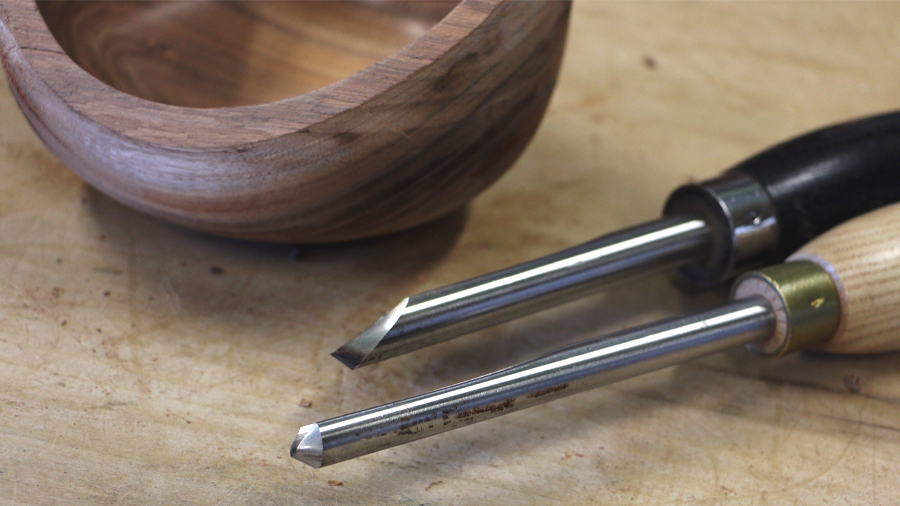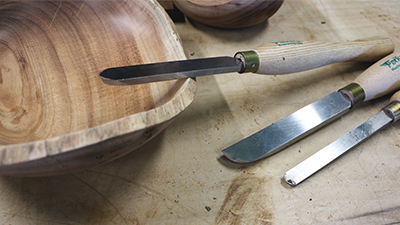Woodturning can be a gratifying and rewarding hobby, with the bonus of creating useful and beautiful end products that you can often use around the house. With the variety of tools out there to make that happen, you may be debating whether a bowl gouge is a necessary addition to your woodturning toolkit.
As many experienced woodturners will tell you, bowl gouges are uniquely suited to created bowls. But while this type of cutting tool is useful, you can definitely turn wood without having a bowl gouge on hand. Despite its simplicity, a wood lathe can be used to produce a wide variety of shapes and items, especially if you handle your cutting tools with the right training and/or experience.
However, bowl gouges are popular for a reason: they’re specialized tools that do their assigned job well. But, if you only plan to make a bowl every so often or just want to try making your first bowl before purchasing a new tool, a bowl gouge isn’t strictly necessary. Keep reading to learn the best way to turn a bowl without a bowl gouge, as well as which tools beginner woodturners should have.

Set Yourself Up for Success If Wood Turning Without a Bowl Gouge
While you’ll likely find experience woodturners achieving the task with other tools, a round or square nose scraper will be your best alternative to a bowl gouge when it comes to bowl turning.
Pulling this off will require some patience and some strategic planning as you get used to a new technique, so make your life easier by choosing the right type of wood and turning speed for the first few times you try this method.
When held at an angle so that the cut is made close to the center of the bowl’s developing curve, scrapers can help you carve out and control a consistent thickness of the wall of the bowl you turn. While many woodturners would be more likely to use a round nose scraper to finish up the work of a bowl gouge, you can certainly do the entire job with a scraper; it might just be a less efficient process.
Finally, you’ll likely want to slow down your turning speed and select a dry wood, at least for your first two attempts. Slowing down the speed of your lathe can make for a tedious process, but it will help you maintain control of your scraper and the finished look.
Often, woodturners select a green wood (also known as wet wood) for bowl turning, but although the softer wood can produce beautifully curved bowls, that softness will allow too much give when you don’t yet have complete control of your technique. Making these choices will help you successfully master bowl turning with a scraper with a much larger margin for success.

Bowl Gouges Work Well, But You Can Get by Without One
What sets a bowl gouge apart from other cutting tools used in woodturning is the uniquely curved edge of the inner flute. While other cutting tools tend to have a flat or more open inner edge, bowl gouges have the deepest and most rounded channels. These can include:
- Parting tools
- Skew chisels
- Fingernails gouges
This shape makes them perfectly shaped to turn bowls and not much else. And while many woodturners would call their bowl gouge an indispensable tool, that doesn’t necessarily mean that you need one to get the job done.
If making bowls will feature heavily in your woodturning projects, getting a bowl gouge is definitely a good idea. Especially if you’re not sure of your interest in bowl turning, these tools can be found for relatively low prices (compared to other woodturning tools) in either a ½-inch or 3/8-inch size, either of which should work for most bowl projects.
On the other hand, there are plenty of reasons why you may want to hold off on buying a bowl gouge:
- You only need to make a limited number of bowls, either just to try out or as a type of project that you don’t plan on doing very often.
- You have a limited budget and would rather avoid purchases that aren’t strictly necessary,
- You’re just starting your woodturning hobby and want to stick to purchasing more general-purpose cutting tools.
Whatever your reason, you can feasibly turn a bowl with other popular woodturning tools, although there may be some added difficulty. Before we get into how you accomplish that, let’s tackle the last reason from the above list and go over the essential woodturning tools you need to handle almost any beginner’s projects.
Here Are the Essential Woodturning Tools You Need
So many people love woodturning because it can be both a fairly straightforward and richly complex experience at the same time. Generally speaking, the process of woodturning has few variations in application, but slight tweaks in the tools, techniques, and material you use can produce a wide variety of results.
If you’re just starting in the hobby, the variety of cutting tools available on the market can be a bit overwhelming. To start on the basics, you want to get tools on the following list. These will set you up to develop the fundamental woodturning skills you need before you need to start purchasing specialized tools like wood gouges.
Essential Woodturning Tools for Beginners:
- Wood lathe
- Carbide cutting tools (held straight) or traditional tools (held at an angle)
- Roughing gouge
- Skew chisel
- Spindle gouge
- Parting tool
- Scrapers
- Grinder or sharpening system
- Goggles/glasses for eye protection
- Mask
- Respirator (optional, depends on personal needs and type of wood used)
Each of the four types of cutting tools features on the above list can be used for a moderate variety of tasks, making them relatively versatile tools when compared with the somewhat one-trick bowl gouge.
For example, the roughing gouge, often one of the first tools you’ll want to pull out on a new project, is generally used to handle the coarse work of giving untouched blocks their general shape before finer details are applied. Then, other tools can be used to create different shapes and cuts in the wood when applied appropriately, including:
- Skew chisels
- Spindle gouges
- Parting tools
Woodturning Is All About the Technique
As mentioned above, once you have your all-around cutting tools in hand, you can apply them to accomplish pretty much any project you have in mind. The key to doing that well is practice and good technique.
At its core, woodturning is simply applying a sharp-edged implement to a rotating piece of wood to create a symmetrical item. Once you know how each tool will interact with different types of wood at different angles, speeds, and points of the grain, you can use basic tools to accomplish the same tasks as the specialized ones.
But the only way that you’ll gain this knowledge is through consistent practice. Knowledge and experience, not tools, are really what set apart beginners, hobbyists, and the best woodturning artists and teachers.
Whether you use a bowl gouge or another cutting tool to turn bowls, you should expect the learning process to involve some trial and error. Either way, you’ll need to practice your technique because you’re using a new tool or because you’re using an old tool in a new way.
However, if you’re set on woodturning a bowl without a bowl gouge, there are some steps you can take to make the learning process smoother and give yourself a better chance of success on each attempt.

